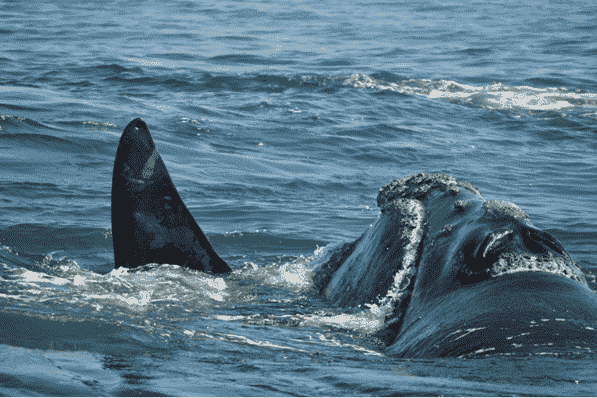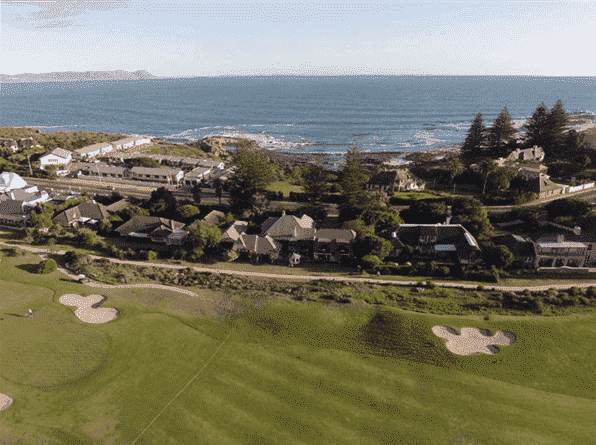40 feet and 65 tons – Southern Right Whale Boat Charter – Walker Bay, South Africa

Think about those numbers for a minute – 40 feet and 65 tons of mobility in the sea. For anyone who has seen a whale in the ocean it can be hard to get a feel for how big these animals are as most all their bodies remain underwater when we see them.  Perhaps a better way to get a feel for their size from afar is to remember that a full grown male elephant weighs 6 tons. So, the Southern Right is ten times the weight of a mature elephant – 10 times. Somewhat sets you back when you think about it.
Perhaps a better way to get a feel for their size from afar is to remember that a full grown male elephant weighs 6 tons. So, the Southern Right is ten times the weight of a mature elephant – 10 times. Somewhat sets you back when you think about it.
Most SUV’s might be about 10 feet long, so to get a visual take a look at stacking three more of those behind yours the next time you head out to the car. As you will see here, due to our intimate interaction with these mammals we will not have the problem of under appreciating their size.
Overnighting at Mulligan’s Guest Lodge is always something to highlight on the list.The owners, Paul and Yvonne Jansen, as well as their children, Emile and Paul, Jr. have become good friends since we met in late 1999 during my first trip to South Africa with my sister. Emile has been working aboard the yachts in the Mediterranean (and throughout the world) as a deckhand at first and now a step removed from being the captain. Paul and Yvonne are good company and always have provided my family with a good time.

Mulligan’s is located right between the two bunkers.
Dinner in downtown Hermanus is on tap for us this evening when I return.
Walker Bay is known as one of the top 3 whale watching spots in South Africa. Located but an hour and a half from Cape Town it is an easy day trip for anyone visiting the Mother City. The road out hugs the coastline and passes through some small inviting seaside communities like Gordon’s Bay, Betty’s Bay and Pringle Bay.
We could opt for a charter boat trip out of the Hermanus harbor but I got started with Ivanhoe Sea Safaris and they are the only based departing from Gansbaai, about 20 minutes east of Hermanus. The whale viewing has been so prolific that I have quite easily decided to be a repeat customer.
Right whales come to the waters of South Africa from the Antarctic to rest up, mate and birth their calves during the winter months of June – November. The cliff top paths in Hermanus serve as good land based whale watching vistas as does the seaside community of de Kelders and de Hoop Nature Reserve yet further east.
Jason and Michelle are the day to day operators of Ivanhoe Sea Safaris after taking over from its founder, Captain Rudy Hughes a few years ago. We pulled out of Gansbaai harbor about 10 AM with a couple from Germany and another one from the UK. We were lucky to be on this boat with such a small group.

The first time I set out on this boat ten years ago, I was thinking that getting within 25 yards of a whale might be considered a lucky sighting but as with most attractions in South Africa I was being too conservative in my estimate. The first sighting proved my point yet again when three whales spotted off the bow remained in place as we put the boat into idle and drifted ever closer to view their interactions with one another.
Due to the Southern Rights not feeding much at all during these months, their behavior with one another can be playful and active. These three seemed hardly aware of our presence and made no effort to avoid our presence. Eventually they drifted by our boat within 10 feet of the railing, all the time pushing one another around and under our boat. We sat with them for about 20 minutes until one veered off from the pack and ever so slowly made his way towards us to take a look. The size of his head was plenty big to have stepped off the boat gunnels and right on to back without getting wet. These creatures are obviously intelligent and interested in us. With a turn of its tail the whale could upend our boat but their sense of place is so acute they never seem to touch the boat unless they intend to do so. In a half dozen trips I have always had these type encounters where the whale is almost within a distance to touch. Its sense of space is most impressive.
Jason does like to sit with specific whales indefinitely in order to show them some respect so we pushed off and left these three to themselves again.
It was but 10 minutes later that we saw another group in the distance and slowly worked our way to them. At slow speeds we reach the whales, always giving them the chance to hear us coming and to avoid interaction if desired. We then sit in one spot with the engine idling so that the whales always know where we are. These three also decided to stay close by our boat and seemed to be even more active than the prior group. There was plenty of foam being churned up in the sea due to their diving and reappearing and rolling. We again sat in the same spot for about 20 minutes while these whales circled our boat looking to be perfectly content with using us as a pivot point. At one point, two of the whales were pushing on one another and perhaps lost track of where we were, drifting ever closer to our bow. Just when it looked like there was going to be some contact at the surface one of the whales raised his tail to about our eye level and but 6 feet away, and then gently dove under our boat and reappeared on the other side.
Jason tells me these creatures can not only see us but hear us talking on the boat when they stick their heads out of the water. The intimacy with the whales while onboard with Ivanhoe is something to feel, as well as see. All told we probably saw 10 whales over the course of about 3 hours, all within the same viewing distance.
